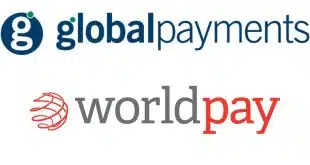Despite what MasterCard Inc. executives labeled a “strong quarter” of earnings, U.S. credit card purchase volumes continued to fall in the three months ending March 31. In addition, MasterCard’s debit card count dropped by 1.6% even though debit transaction volumes grew.But signs of both an “underlying momentum of our business as well as some encouraging signs of economic recovery in pockets around the world” began emerging at the end of the first quarter, said Robert W. Selander, MasterCard’s chief executive.“While credit growth in the U.S. was still negative for the quarter, we’ve moved beyond the double-digit declines of 2009,” Selander said in an early-morning conference call on Tuesday. “During the month of March, we saw positive growth in processed U.S. credit volume for the first time in approximately 18 months. This trend continued through the first four weeks of April.”MasterCard’s first-quarter U.S. credit and charge card purchase volume totaled $110 billion, down 3% from $113 billion in 2009’s first quarter. U.S. debit purchase volume was $84 billion, a nearly 7% increase from $79 billion a year earlier. On the strength of debit, total U.S. debit, credit, and charge card purchase volume rose slightly to $194 billion in the first quarter, compared with $192 billion last year. Globally, the number of processed transactions rose 4.6% to 5.37 billion.The network’s U.S. acceptance base, which includes merchant locations and ATMs, grew 5.1% to 8.3 million locations. As of March 31, MasterCard financial institutions worldwide had issued 1.6 billion MasterCard and Maestro-branded cardsMasterCard reported that net revenue for the first quarter rose 13.1% to $1.31 billion from $1.16 billion a year earlier, or 10.2% on a constant-currency basis. Operating income increased 24.6% to $700 million from $561 million in the year-earlier quarter. Transaction processing revenues increased 16.7% to $509 million, well above the rate of transaction growth.Total operating expenses increased 2.2% to $608 million, driven by currency fluctuations, a 2.1% increase in general and administrative expenses and a 13.3% increase in depreciation and amortization, primarily due to investments in data-center equipment and capitalized software. Those increases, however, were partially offset by a 0.7% decrease in advertising and marketing expenses from 2009’s first quarter.Rebates and incentives, which include payments to issuers to issue MasterCard-branded cards and for merchants to run MasterCard usage promotions, rose almost 31% to $440 million from $337 million in 2009’s first quarter. MasterCard and Visa Inc. are opening their wallets to generate transactions, with SunTrust Banks Inc. recently announcing a switch of most of its card business to MasterCard (Digital Transactions News, Jan. 14).In response to an analyst’s question, Selander commented on a recent Congressional hearing on legislation, including amendments to the financial regulatory reform bills being debated in the U.S. Senate, that would allow merchants more power to negotiate interchange rates (Digital Transactions News, April 28).“From our perspective, we believe these continue to be pushed by the Merchants Payment[s] Coalition [a merchant group advocating lower interchange] and the motivation behind these really is to put merchants in the position where they don’t pay their fair share,” Selander said. “At the end of the day, someone is going to have to pay this and to the degree these amendments—as some of them seem to be getting structured—were to move through, then consumers would wind up being penalized.”Selander added that, “we think that Congress understands you can’t give anybody a free lunch. So we hope that’s the way they think about it as they work their way through financial regulatory reform.”
Check Also
Better Defenses Make It Harder to Perpetrate Fraud, a Report Finds
Ransomware demands and payments declined in 2024, thanks to a combination of better law enforcement …





